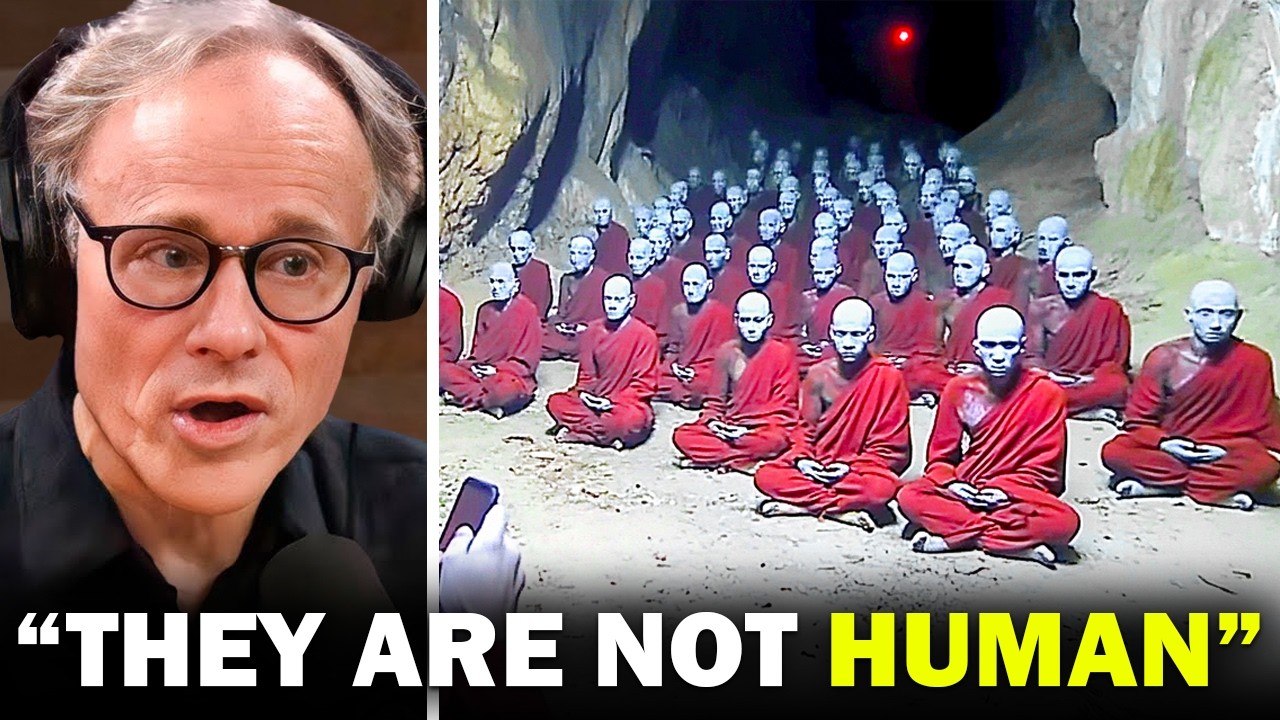Ancient Mysterious Monks Found Deep Underground – They Posses Hidden Knowledge

Hidden deep in remote temples, dense forests and icy peaks are mysterious tales of monks who pushed the limits of science, explored ancient wisdom and accomplished the seemingly impossible. They left behind legends of natural mummies, reincarnation, supernatural abilities and spiritual journeys that make us question the potential of human beings.
One notable example is the mummy of Sangha Tenzin in the Spiti Valley, India. Unlike mummies mummified in ancient Egypt, his body was preserved through “living mummification” – an extremely rare ritual in which the monk prepared himself for death through meditation, fasting and the use of herbs. His body remained sitting in the lotus position, eyes half-closed as if in meditation, and was preserved almost intact by the harsh Himalayan climate.
In Tibet, monks continue to practice special rituals such as intentional reincarnation – where Lamas are reincarnated to continue guiding their followers. They also practice the technique of “tummo” – controlling body temperature with breathing and visualization, allowing them to meditate in the snow wearing only light clothing. Rituals such as creating a sand mandala and then destroying it immediately emphasize the impermanence of Buddhism.
Meanwhile, the Amazon – a place that few people think of when talking about monks – has shamans (shamans) who play a similar role. They heal with herbs, hold Ayahuasca ceremonies to access the spirit world, and live in harmony with nature – where forests and rivers become spiritual teachers.
Egypt also contributes to this mysterious treasure with the discovery of a 4,400-year-old tomb at Saqqara. The tomb of a high priest of the Fifth Dynasty reveals the lifestyle, religious rituals and sophisticated social organization of the ancient Egyptians. Here, priests not only perform rituals but also act as scientists, physicians, and political advisors.
Finally, there are the Mahayana monks – those who vow to postpone their nirvana in order to help others escape suffering. Found primarily in China, Japan, Korea, and Vietnam, they emphasize compassion, community service, and the belief that anyone – not just monks – can attain enlightenment through a life of mindfulness and love.
**Zen and Monk Life**
Zen, an important branch of Mahayana Buddhism, is often associated with tranquil gardens, elegant tea ceremonies, and challenging koan learning. Originating in China as Chan, the school spread to Japan and other countries, attracting a large following in the West. Zen monks emphasize direct experience and mindfulness in every action.
Everyday activities in the monastery, from sweeping the grounds to eating meals, become opportunities to practice mindfulness. The core of Zen is zazen, or sitting meditation, in which monks sit upright on cushions and observe the flow of thoughts without clinging. They do not try to stop thoughts, but learn to let them come and go naturally.
Over time, this rigorous practice opens up insight and brings about moments of awakening – called satori – that transcend ordinary logic. Another unique element is the koan – paradoxical questions such as “the sound of one hand clapping” – which are meant to disrupt familiar patterns of thinking and lead to direct understanding. Zen masters discuss the process of enlightenment with each student individually.
In the monastery, meditation, work and study are arranged in harmony. Beginners often do simple tasks such as cleaning or cooking, but they must do them all with a spirit of mindfulness. Silence is also maintained to help maintain attention on the present. Since the 20th century, Zen has been widely introduced to the world through books and traveling teachers, and today many Zen communities have formed everywhere.
While the rules may vary from place to place – from the strict Japanese tradition to the more flexible urban model – they all share the same spirit: enlightenment comes from living fully in the present. The calm and devotion of Zen masters continues to inspire spiritual seekers around the world.
—
**Monk meditates for 200 years in Mongolia**
In a remote part of Mongolia, the body of a monk was found seemingly still meditating – much to the astonishment of many. The body had been stolen from its resting place and smuggled, but when it was recovered, the monk was still sitting in the lotus position, looking as if he were still alive.
Many local Buddhist leaders do not believe he is dead, but believe he may have been in a state of “tukdam” – a deep meditative state that, according to tradition, can slow or stop the process of decomposition. Although modern medicine doubts this, people are still amazed by his ability to sit motionless for centuries.
Expert analysis shows that the mummy is well preserved, possibly due to Mongolia’s cold, dry climate. Whether he actually died or not, his story highlights his steadfast spirit and dedication to the end. It also reminds us of the role of Buddhism in Mongolian history – a tradition that was once suppressed but is now reviving.
—
**Life at Beomeosa Temple – South Korea**
Beomeosa Temple, located on Mount Geumjeong near Busan, is a long-standing center of learning with a history of more than 1,300 years. The atmosphere here is peaceful and quiet with the sound of chanting and the gentle mountain breeze blowing through the trees.
A day at the temple begins at 3-4am, when monks gather to chant and meditate, focusing on compassion and mindfulness. After breakfast, they have a simple vegetarian meal in silence – a practice of mindfulness, gratitude and moderation.
Afterwards, the monks take turns doing chores such as gardening or repairing things. Studying scriptures and discussing philosophy are also emphasized. Young monks learn from elders, creating a bond between generations.
Beomeosa also opens its doors to lay people who want to experience short-term monastic life – meditation, tea drinking, and volunteer work. The highlight is the community spirit: living, eating, and practicing together, helping to break down ego and foster humility.
In a modern Korean society, Beomeosa is a traditional anchor, reminding people to slow down and appreciate every breath.
—
**Sadhu and Mount Kailash**
Mount Kailash, which rises more than 6,000m on the Tibetan plateau, is a sacred place for four major religions: Hinduism, Buddhism, Jainism, and Bon. Despite its steepness, the summit has never been climbed – perhaps more out of reverence than physical difficulty.
Many devotees make pilgrimages around the mountain in rituals that last several days. Among them are Sadhus – Indian hermits who renounce the world to practice asceticism. They endure the cold without much clothing, live with little food, sometimes only drink water or meditate for long periods without leaving the place.
Some use yogic breathing techniques to stay warm – similar to Tibetan monks. They attract pilgrims seeking blessings or healing. Legend has it that Kailash is a place of powerful spiritual energy, where enlightened beings live in caves. Although scientists have explored the area, they have not often interfered deeply out of respect for local beliefs.
Monks and the Bhikkhuni Revival
Many people do not know that women have been present in Buddhism since its inception. “Bhikkhuni” is the term for fully ordained female monks. Although they are obscured in popular culture, they have a history of more than 2,000 years.
The originator was Mahapajapati Gotami – the Buddha’s foster mother. After repeated requests, the Buddha allowed women to become monks under a separate set of rules. However, social and political prejudices have caused many places to stop ordaining women, disrupting the lineage.
Recently, efforts to restore the Bhikkhuni precepts in Thailand, Sri Lanka, etc. are growing. Despite opposition from some conservative groups, many sanghas have strongly supported them.
Today, Bhikkhunis teach, study, meditate, and serve the community, enriching Buddhist life. They represent the spirit of resilience, gender equality, and compassion.
Shaolin Temple – Martial Arts and Meditation
Shaolin monks are famous around the world for their outstanding martial arts – powerful, agile, energetic kung fu performances. But the root of it all is Chan – mindfulness and meditation.
Starting their day before dawn, they meditate before engaging in hours of martial arts training, including kata, moves, muscle training, using wooden dummies, and even boulders. Some reach extraordinary levels: breaking bricks, taking blows without being hurt.
For Shaolin, martial arts is not just about fighting, but also about training the mind, overcoming oneself. Even though they have experienced war and reform, they still maintain a resilient spirit. Today, many people from all over come to Shaolin to learn – not only martial arts, but also the philosophy of life. They emphasize that: “A strong body is not enough – the mind must be even stronger”.








